Occupancy of acoustically tagged oceanic manta rays, Mobula birostris, in Bahia de Banderas, Mexico
July 2023
P. Santiago Domínguez-Sánchez, Ana Širović, Iliana A. Fonseca-Ponce, Aldo A. Zavala-Jiménez, Robert D. Rubin, Katherine R. Kumli, James T. Ketchum, Felipe Galván-Magaña, R. J. David Wells & Joshua D. Stewart
Keywords: GAM · Environmental and physical variables · ENSO · Aggregation sites · Oceanic manta ray · Residency patterns · Movement
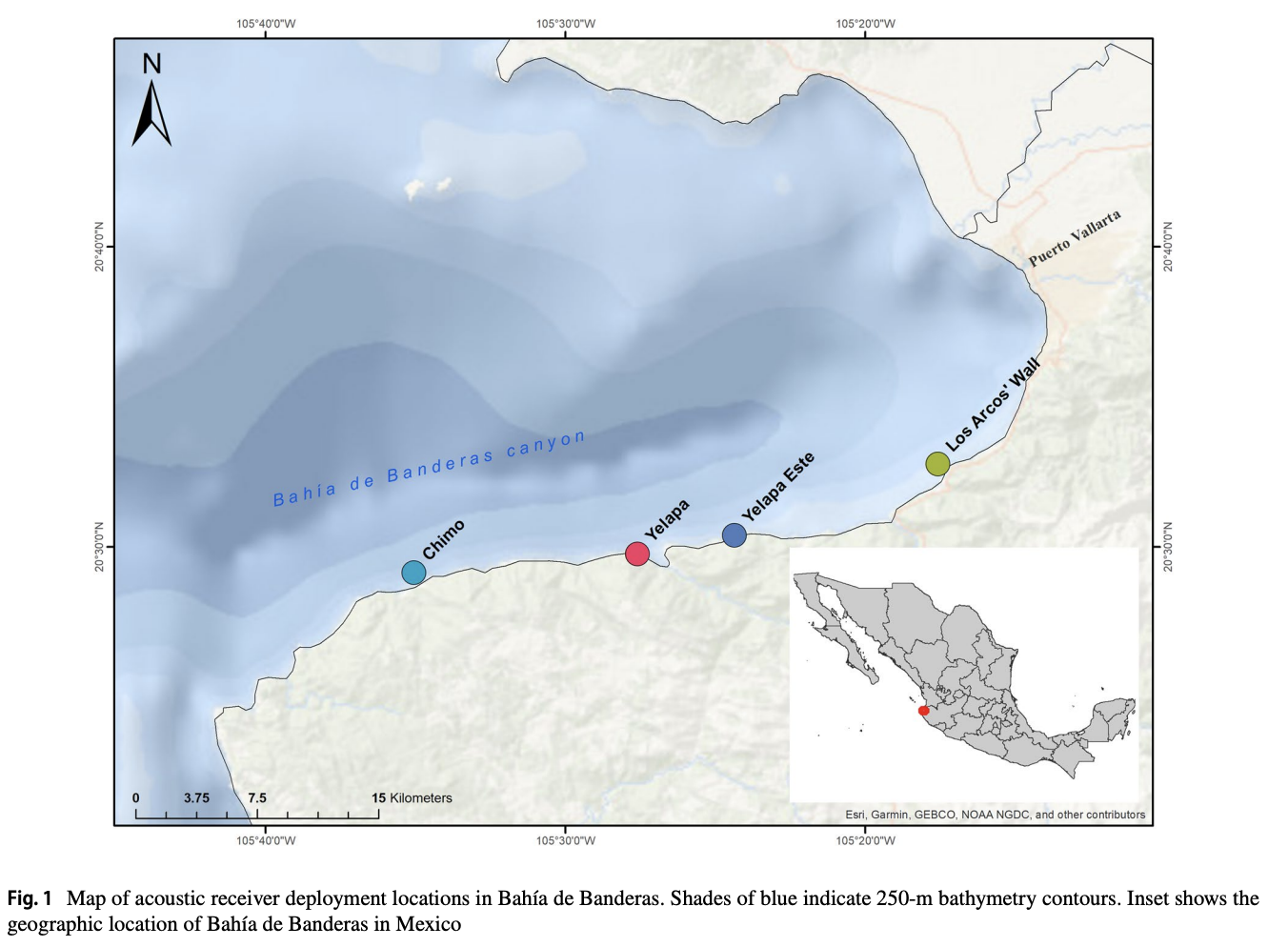

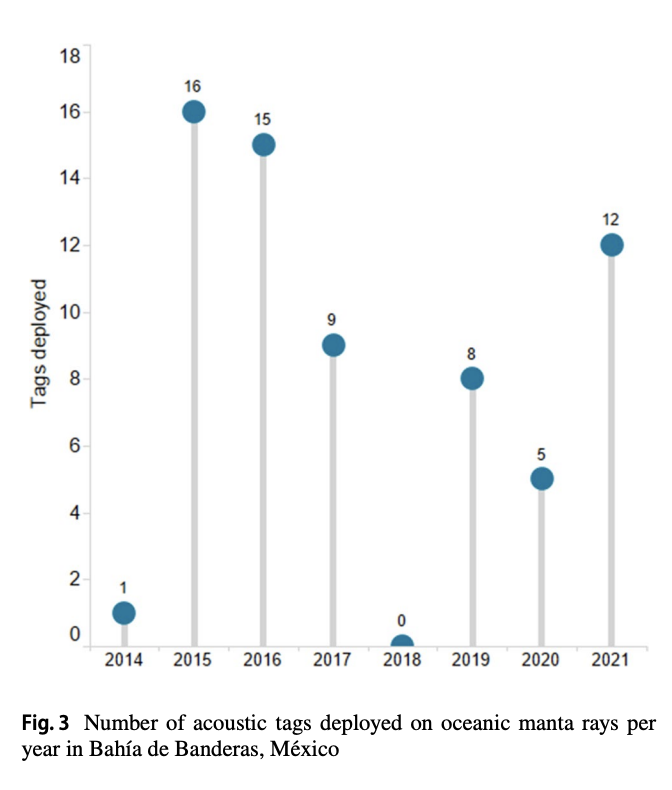
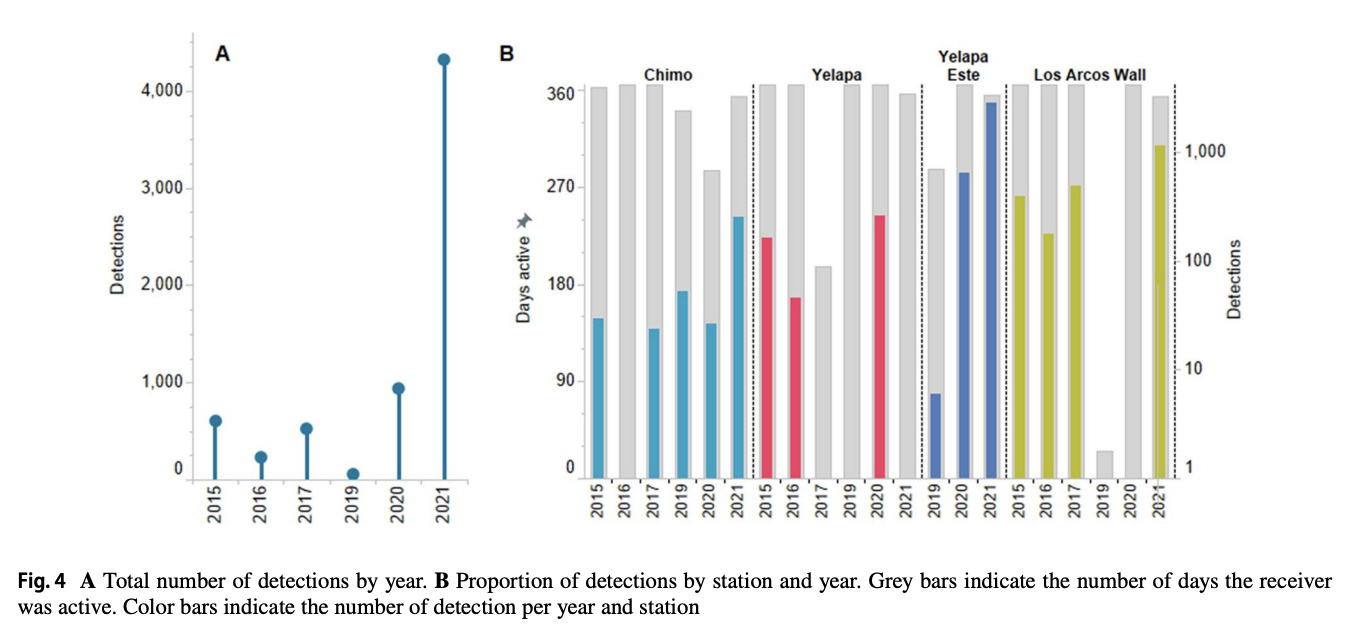
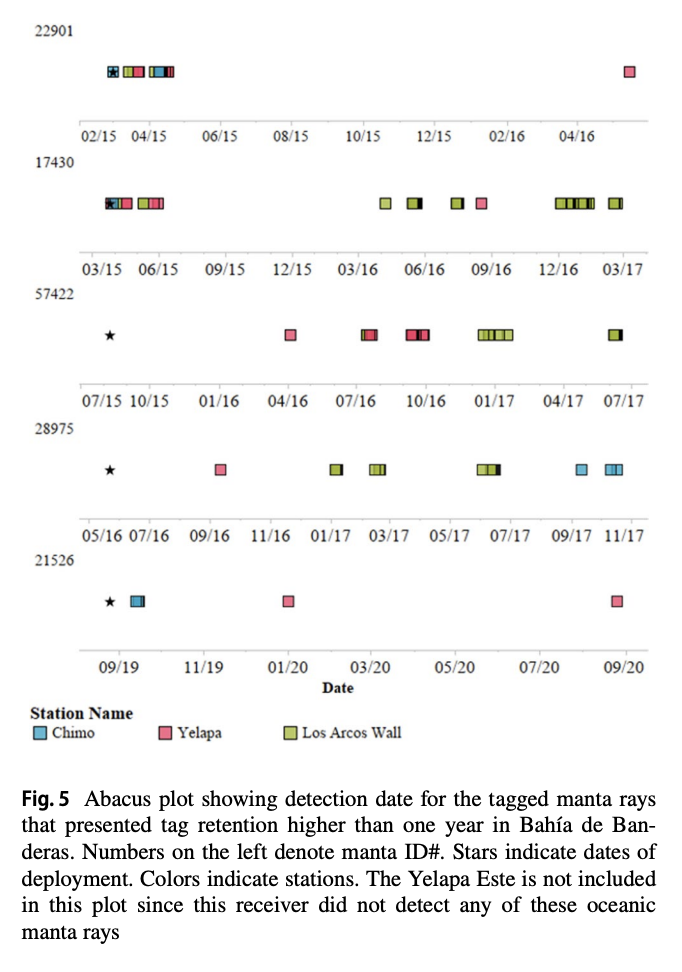
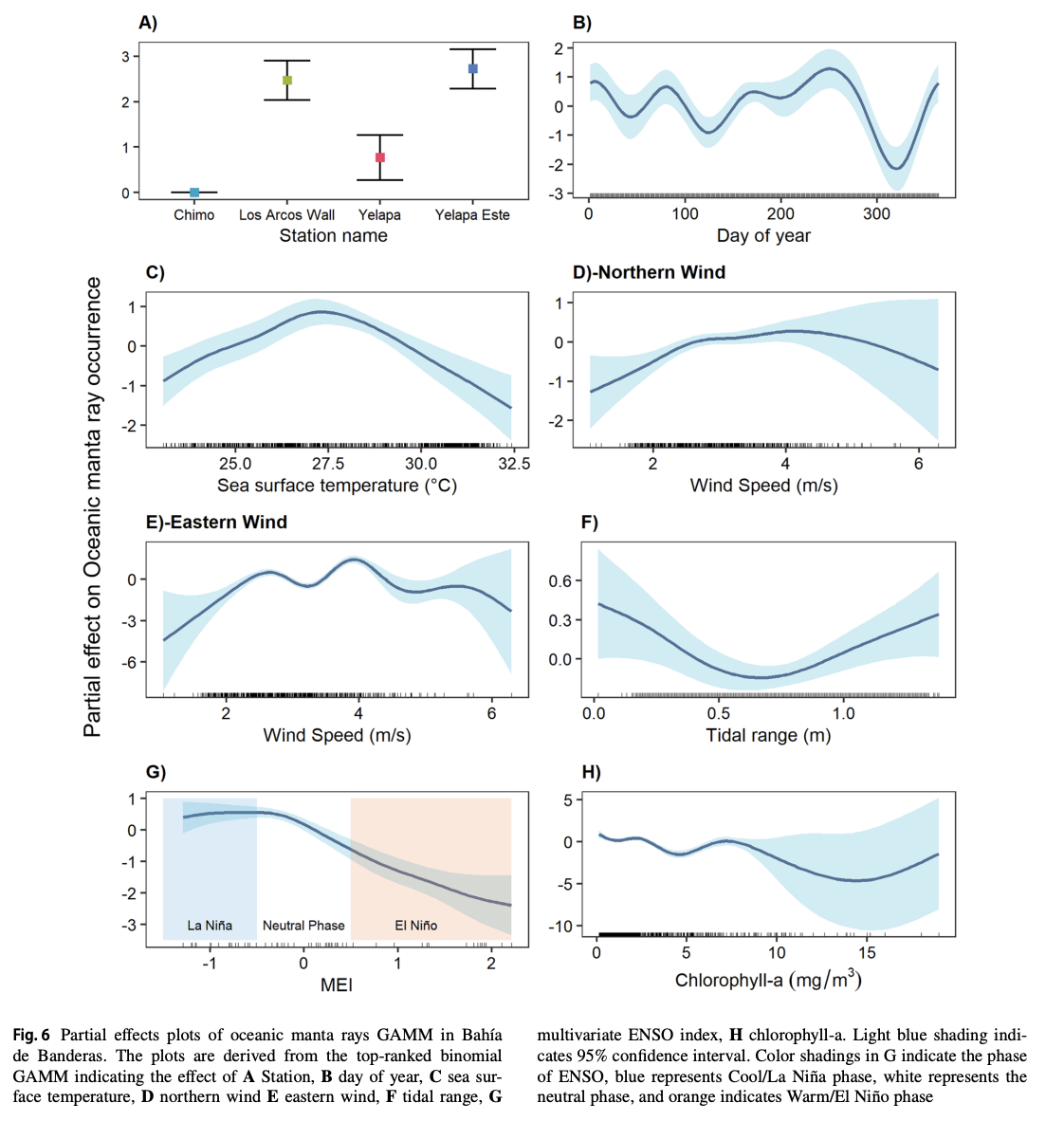
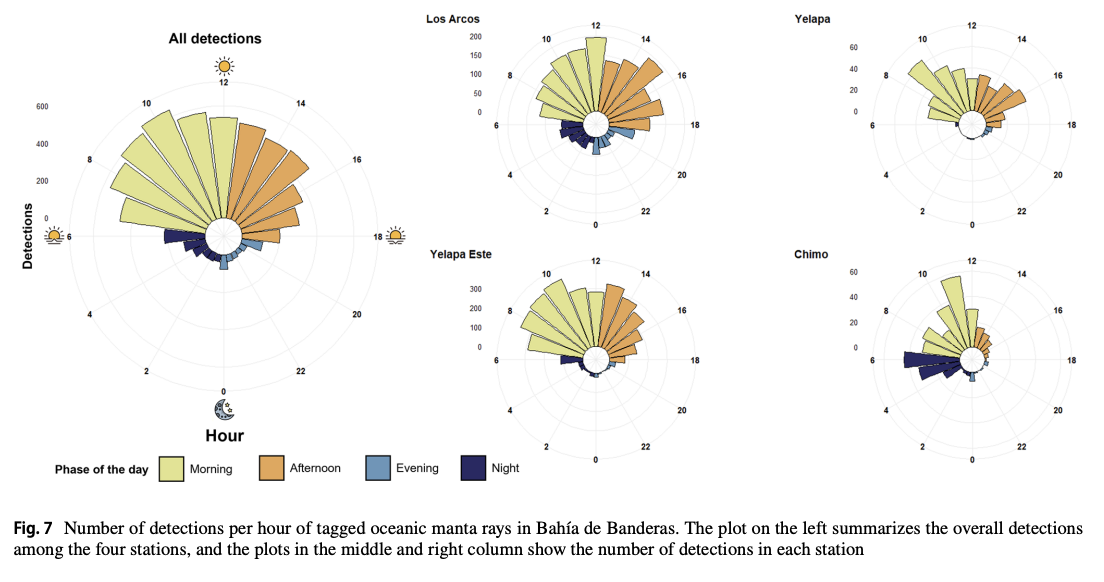
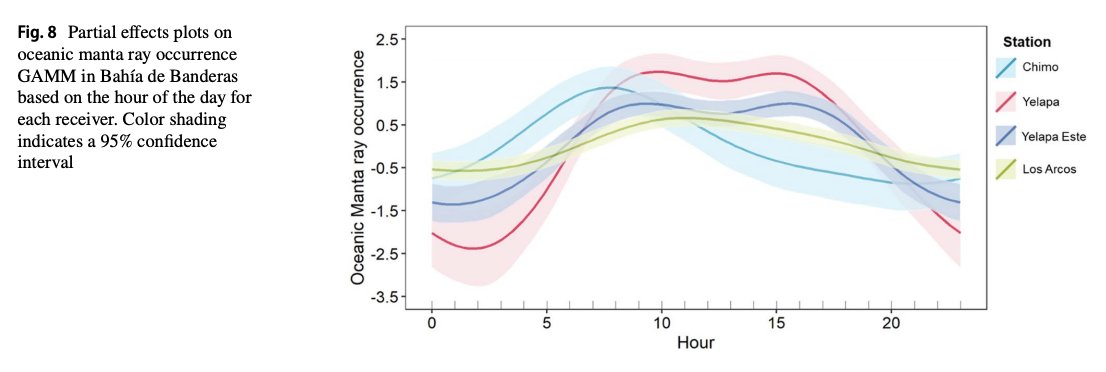
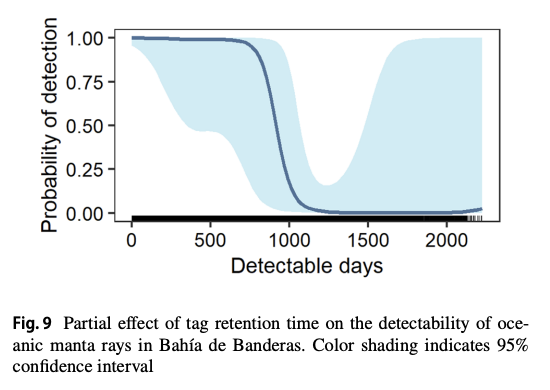
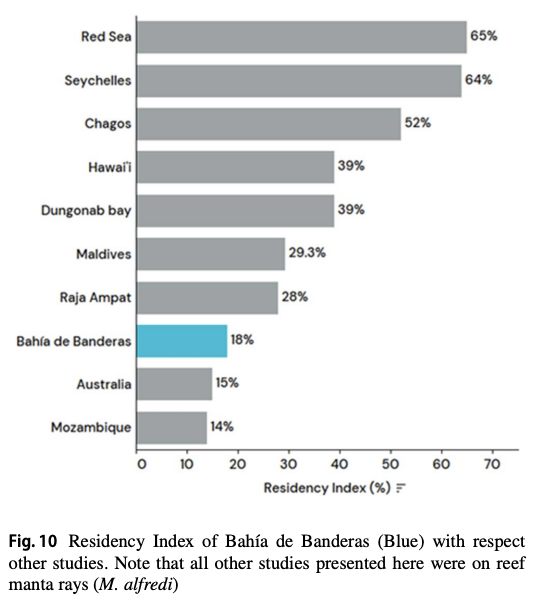
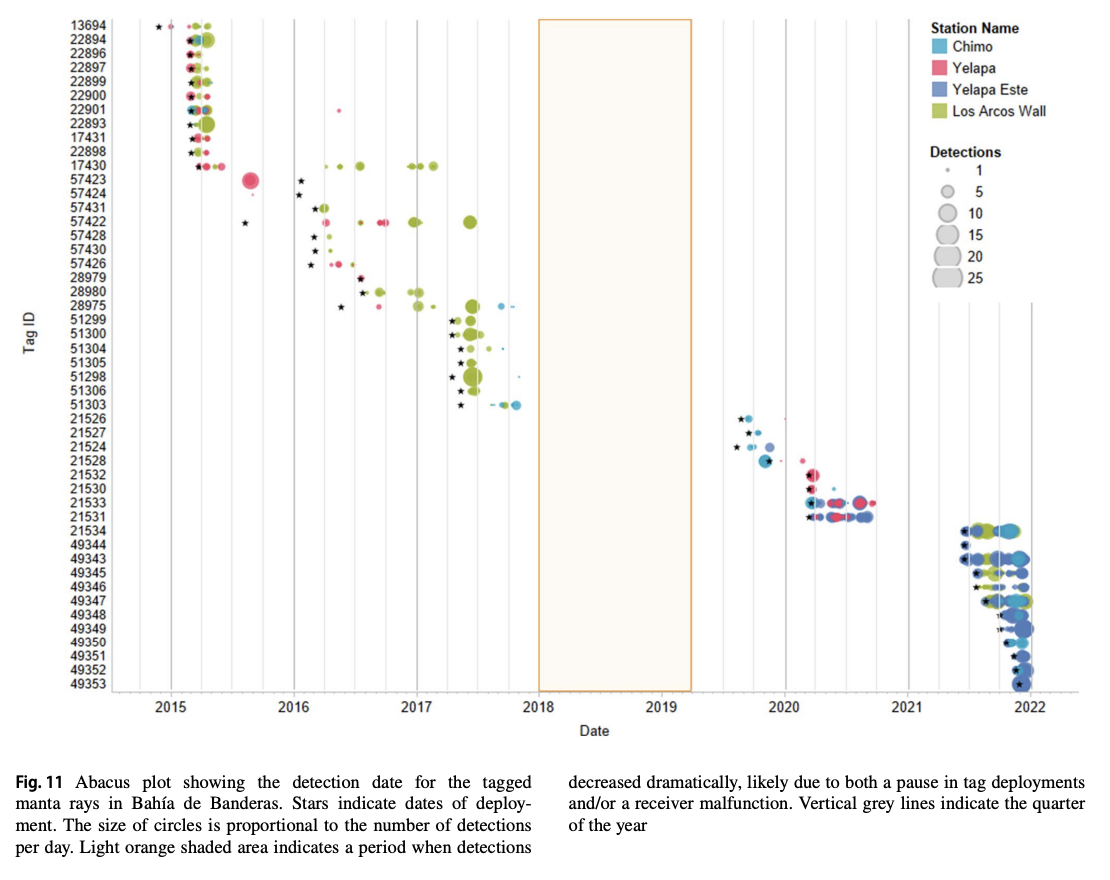
Summary: The oceanic manta ray (Mobula birostris) is an endangered species often found at oceanic islands and seamounts, but also in seasonal aggregations in Bahía de Banderas, Mexico. Researchers used acoustic telemetry to track 66 tagged rays from 2015 to 2021. They observed seasonal trends in ray presence, influenced by temperature, wind speeds, tides, and chlorophyll-a levels. El Niño Southern Oscillation (ENSO) also affected their presence. Rays were more active in the morning, possibly moving to deeper waters at night. This study provides essential data for future conservation efforts near ray aggregation sites.
Abstract
“The oceanic manta ray (Mobula birostris) is an endangered species commonly seen at oceanic islands and seamounts; however, seasonal aggregations have been described in highly productive, coastal areas. Oceanic manta rays are found in high numbers seasonally in Bahía de Banderas, Mexico, a unique nearshore aggregation site for the species. We used acoustic telemetry to examine the infuence of environmental variables on the occurrence of 66 tagged oceanic manta rays over a seven-year period from 2015 to 2021. Seasonal trends in oceanic manta ray occurrence showed a peak in detections from January to March, and another peak from May to early October. Oceanic manta rays were present when the temperature ranged between 25 °C and 29 °C, the southward wind speeds ranged between 3 and 5 m s –1, the westward wind speed between 2.5 and 4.5 m s –1. Furthermore, oceanic manta rays’ presence was higher at high and low tides and when Chlorophyll-a values ranged between 2.5 and 7 mg m3-1. Results also suggest that El Niño Southern Oscillation (ENSO) had a strong efect on oceanic manta ray presence in the bay, which is consistent with previous studies. The detections of oceanic manta rays in the south of the bay, were greater in the morning hours, suggesting that during the night they may move to deeper waters, similar to other reported studies of manta and devil rays. Our model suggested a tag retention time of 300 days. This study serves as a baseline for future management plans for the species to minimize impacts on this population from human activities occurring in close proximity to oceanic manta ray aggregation sites.”
Author Affiliations
Ocean Ecology Lab, Marine Mammal Institute, Department of Fisheries, Wildlife, and Conservation Sciences, Oregon State University
Shark Biology and Fisheries Science Lab, Department of Marine Biology, Texas A&M University at Galveston
Proyecto Manta Pacific México
Department of Biology, Norwegian University of Science and Technology (NTNU)
The Manta Trust
Tecnológico Nacional de México/IT Bahía de Banderas, Crucero a Punta de mita S/N
Funded by
Disney Conservation Fund
Connell & Associates
National Geographic Society
Save Our Seas Foundation
Punta de Mita Foundation

